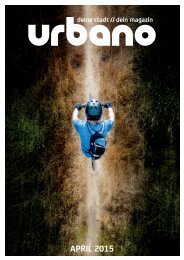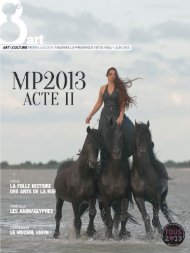Life Nature Magazine
themed ‘Dusk until Dawn’. These times are to me, some of the most exciting to experience wildlife. When I can make it out of bed in time for dawn, the chorus of birds chattering and singing above me makes the wrestle with my tiredness all worth it. As sun sets, some of the most secretive animals come out of their day time hiding places. Foxes and badgers can be seen by the lucky, and bats’ sonar can be heard with a handy bat detector. The time between dusk and dawn is fascinating too. Whilst most of us are tucked up in bed asleep, many animals are exploiting this quieter period, with multitudes of adaptations allowing them to use the darkness to their advantage. From this issue, many of the original team, including myself, are ‘phasing out’. We’re looking for new team members – see the careers section for more information on how to get involved. Whilst some of us will still be involved in the next issue, we’ll be taking less on, so we’d like to thank
themed ‘Dusk until Dawn’.
These times are to me, some of
the most exciting to experience
wildlife. When I can make it
out of bed in time for dawn,
the chorus of birds chattering
and singing above me makes
the wrestle with my tiredness
all worth it. As sun sets, some of
the most secretive animals come
out of their day time hiding
places. Foxes and badgers can
be seen by the lucky, and bats’
sonar can be heard with a handy
bat detector. The time between
dusk and dawn is fascinating
too. Whilst most of us are
tucked up in bed asleep, many
animals are exploiting this
quieter period, with multitudes
of adaptations allowing them
to use the darkness to their
advantage. From this issue,
many of the original team,
including myself, are ‘phasing
out’. We’re looking for new
team members – see the careers
section for more information
on how to get involved. Whilst
some of us will still be involved
in the next issue, we’ll be taking
less on, so we’d like to thank
You also want an ePaper? Increase the reach of your titles
YUMPU automatically turns print PDFs into web optimized ePapers that Google loves.
EXETER RESEARCH FROM DUSK UNTIL DAWN AUTUMN ISSUE<br />
be due to the onset of daylight hours<br />
stimulating the snails to retreat into their<br />
shells to avoid predation or dehydration<br />
and thereby slowing down in the morning.<br />
Interestingly, a small number of snails<br />
moved at much greater speeds than others<br />
and were more likely to create their own<br />
<br />
of other snails showed preference to<br />
crawling upon slime already laid down<br />
by another. Exploratory behaviour was<br />
noted across the group, pointing towards<br />
a preference for snails to hide at the base<br />
of trees, in long grass, or near to a water<br />
source – indicating that it is important to<br />
be aware of outside water sources that your<br />
dog drinks from, or long grasses that it<br />
explores. Snails were often seen to change<br />
direction often, meaning the average<br />
garden could harbour hundreds of possibly<br />
eliminating all snails from your garden,<br />
but be aware of what your dog is picking<br />
up, and check their toys and bowls for any<br />
signs of snails. Clean these items often,<br />
and don’t leave them out overnight for<br />
inquisitive snails to hide underneath. Pick<br />
up your dog’s poo – if a dog is infected,<br />
you might not know it, and leaving poo<br />
can help the spread of the lungworm.<br />
Moving forward with the observations<br />
Images: First two from the left: Dan Blumgart, Right: Emma<br />
Simpson-Wells, Cut-out: Kieran Hollingsworth.<br />
Dr Hodgson’s favourite<br />
moments from the media<br />
frenzy include:<br />
1. Whilst being interviewed on BBC<br />
Breakfast being asked by a viewer<br />
whether snail slime was hallucinogenic<br />
and whether she should take her snaillicking<br />
daughter to hospital.<br />
2. Seeing a German newspaper with<br />
the headline “Schnelle Schnecken!”<br />
3. Earning a Drivetime car sticker from<br />
Simon Mayo’s Radio 2 show.<br />
infected snails. Very few snails<br />
‘returned home’, not being<br />
recorded back at their initial<br />
collection site. A lack of<br />
returning snails may not put<br />
paid to the homing instinct<br />
<br />
were encountered relocating<br />
snails in daylight and rapidly<br />
growing foliage.<br />
The study went viral and<br />
appeared in 32 UK national<br />
newspapers and magazines,<br />
155 national and international<br />
TV and radio stations, 276<br />
news websites, reaching global<br />
audiences in the millions; the<br />
last count on YouTube showed<br />
more than 43,500 hits!<br />
We aren’t advocating<br />
made so far, Dr. Hodgson hopes to look<br />
into the re-use of slime trails by snails to<br />
minimise energy costs, and to look into the<br />
<br />
the mucus itself. Watch this space. Slowly.<br />
Written by Linday Leyden, Alumnus<br />
at The University of Exeter, Cornwall<br />
Campus.<br />
7

















